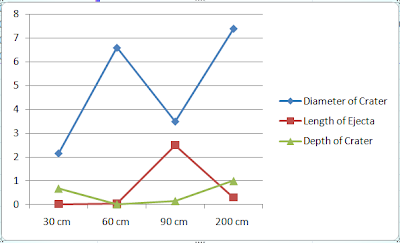
Science 7A
Black Holes spin faster and faster 5/26/2011
In the U.K, two astronomers have discovered that the giant black holes in the center of the galaxies are on a average spinning faster than any black holes in history of the universe. By using radio, optical, and x-ray data. According to evidence, it is strongly believed that there is a black hole in the center of every universe. these holes are about the size or a million and a billion suns, and since they are so huge they are called, "supermassive". The the naked eye a black hole would be invisible, but when the material that get sucked into the black hole, they are heated and once they become hot they emit radiation. The radiation they emit allows the black hole to be detected to telescope. Radiation is not the only thing associated with black holes, twin jets are as well. These jets can be caused a variety of ways, yet scientists believe that a spinning "supermassive " black hole is important. Two scientists, Martinez-Sansigre and Rawlings used models, made by using many different materials, they discovered different, plausible theories. Using radios, the astronomers were able to deduce the jet's power and the spread of it, using this information they could figure out how fast the black hole was spinning. The observations from the astrologers also tell us how the spinning speed has evolved. Long ago, when the universe was smaller, the spinning rate of the black hole was low, yet now the average of a black holes spinning rate has gone up. Being the first time that the evolution of the spinning of a black hole has been constrained, this gives the impression that the black holes that fall under the very stereotypical cateogry of simply sucking things out of space actually spin slower or actually barely spin compared to black holes that merge with other black holes, which spin very fast. In conclusion, the way a black hole spins can tell you a lot about their evolution, and through tests and observations, astronomers have concluded that recently massive black holes have been springing up, and the most logical explanation is that two black holes, both of similar mass, combine to make an even faster spinning black hole.
This effects scientific knowledge, because we are adding to what we already know about our surroundings. There is so much unknown around us, and with small discoveries like these we are slowly learning more about our universe. The benefits of science in this news, would be that we have the tools to conduct these experiments. Otherwise it would be impossible to carry out these experiments. When I first heard about this happening, I didn't really expect much but I found it to be a really cool article that was very interesting.
I chose this article because I thought it fell under the category of the unit we are studying, and it would be interesting to read. What grabbed attention about this article was probably the fact it was about black holes, you don't much about that particular topic anymore. I found this article while searching for current events in science. I learnt about the evolution of black holes from this article. While reading this next I felt, intrigued, because it was liking making a new discovery.
Royal Astronomical Society "Black Hole Spin Faster and Faster." Astronomy Today. 24 May 2011. Web. 29 May 2011. .













